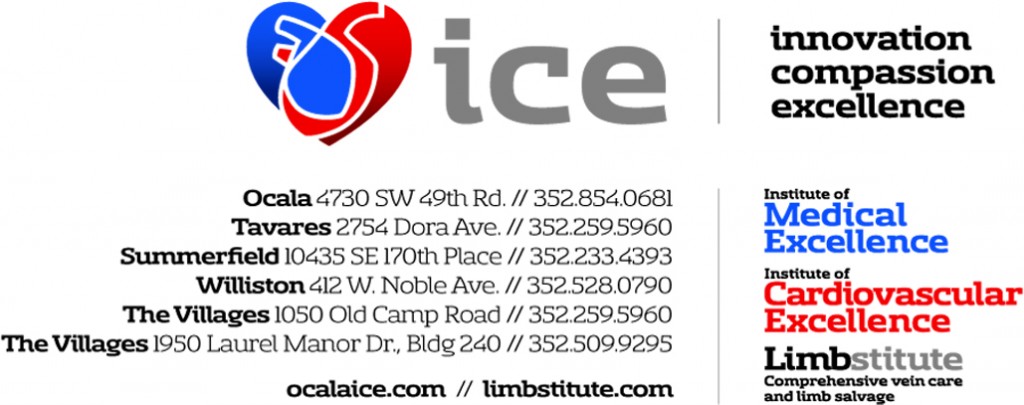 Your heart will be a vital, beating part of you for the rest of your life. It’s up to you how you’ll treat it.
Your heart will be a vital, beating part of you for the rest of your life. It’s up to you how you’ll treat it.
Exercise? You know that’s a given. Practically every study since studies began touts the benefits of regular exercise on a healthy heart.
What about nutrition? Eating heart-healthy, like deciding to exercise, is also a choice. But when it comes to nutritional choices, like everything in life, you can often do better. Then again, you can often do worse …
Proteins
We Americans eat, on average, twice the protein we really need. Protein is present in meat, dairy, beans and nuts, so it ought to be easy to make true heart-healthy choices …
For better: Choose lean meats, cold-water fish (salmon, mackerel), low-fat dairy products, limit egg yolks, try soybean substitutes (burgers and tofu), skin your chicken and trim your meats.
For worse: Full-fat dairy, organ meats, bacon, whole eggs, fried chicken, hot dogs and sausages, cold cuts, ribs.
Salt
Like protein, Americans consume roughly twice the amount of salt recommended by the Institute of Medicine — over 3,400 mg./day! All that sodium is a major contributor to heart disease and stroke.
We do need some salt — 180 to 500 mg./day — for our bodies to function well. The Department of Agriculture would like healthy adults to limit their sodium intake to about a teaspoon (2,300 milligrams) of sodium a day. We need to do more than take the saltshaker off the table. Canned and frozen processed foods also need to go. Make your own dinners from fresh ingredients to really take control.
For better: Experiment with herbs in place of salt, use a salt substitute (there are several brands on grocery shelves), choose reduced-salt versions of everything — especially condiments like low-salt soy sauce
and ketchup.
For worse: Table salt, canned and prepared dinners, tomato juice, full strength soy sauce.
Fruits and Vegetables
The two go hand-in-hand as we are constantly admonished that our hearts will be happiest when we eat more fruits and vegetables. We get more vitamins and minerals from them. Their fiber fills us up and takes the place of less healthy foods we may be tempted to eat. Fruits and vegetables are the go-to items in most diets. Some essential amino acids we can only get from plants. Yet, even with fruits and vegetables there are better — and worse choices….
For better: Fresh or frozen is best for fruits and vegetables. Choose low-sodium canned vegetables. Choose fruits canned in their own juices or water.
For worse: Coconuts, vegetables in cream sauces, vegetables fried or breaded, fruit packed in sweet syrups, frozen fruits with sugar added (that’s just wrong).
Grains
“Whole grains” is the easy answer when it comes to which grains are the best for your heart. Whole grains help regulate blood pressure and contribute to overall heart health. But don’t settle for traditional whole wheat. Branch out to other whole grain sources like quinoa or couscous. Flaxseeds are another healthy choice; full of fiber and omega-3 fatty acids. Grind them up and sprinkle over hot cereal or yogurt. In grains, like other food categories, choices make a difference.
For better: Whole-wheat flour, whole grain breads — look for 100% whole wheat or 100% whole grain, whole-grain pasta, oatmeal (not instant), other whole grains like brown rice, barley, buckwheat, high-fiber cereal (5 gms at least per serving), ground flaxseed.
For worse: White, refined flour — it lurks in almost every dessert from pies and cakes to bread and rolls, buttered popcorn, granola bars, egg noodles and snack crackers.
Fats
Yes. You must eat fats as part of a heart-healthy diet. They’re a source of fuel, provide essential fatty acids and deliver fat-soluble vitamins. But in this category the choices for better or worse are pretty well defined. The American Heart Association targets saturated fats and trans fats as the worst offenders and has set limits on their recommended consumption. For saturated fats — less than 7% of daily calories. For trans fats it’s less than 1%. The easiest way to start reducing our intake of fats is, again, in the kitchen. Trim fat off meats. Limit butter, margarine and shortening. Use low-fat substitutes. And you can still make choices for better or worse …
For better: Choose olive and canola oils, margarine with no trans fats.
For worse: Of course, butter, lard, and bacon grease should be limited. But these may surprise you: non-dairy creamers, hydrogenated margarines and shortening, coconut and palm oil, cocoa butter (it’s the reason there’s a limit on that dark chocolate you hear is so good for you).
“Choice” goes straight to the heart of everything that makes us who we are. Our careers, our spouses, our cars, our clothes — and the food we eat — are choices we make. Choosing to maintain a heart-healthy diet frankly seems like one of the easier choices. We hope this article helps with some of the decisions that go with that choice — for better or for worse.

 Central Florida Health and Wellness Magazine Health and Wellness Articles of the Villages
Central Florida Health and Wellness Magazine Health and Wellness Articles of the Villages



